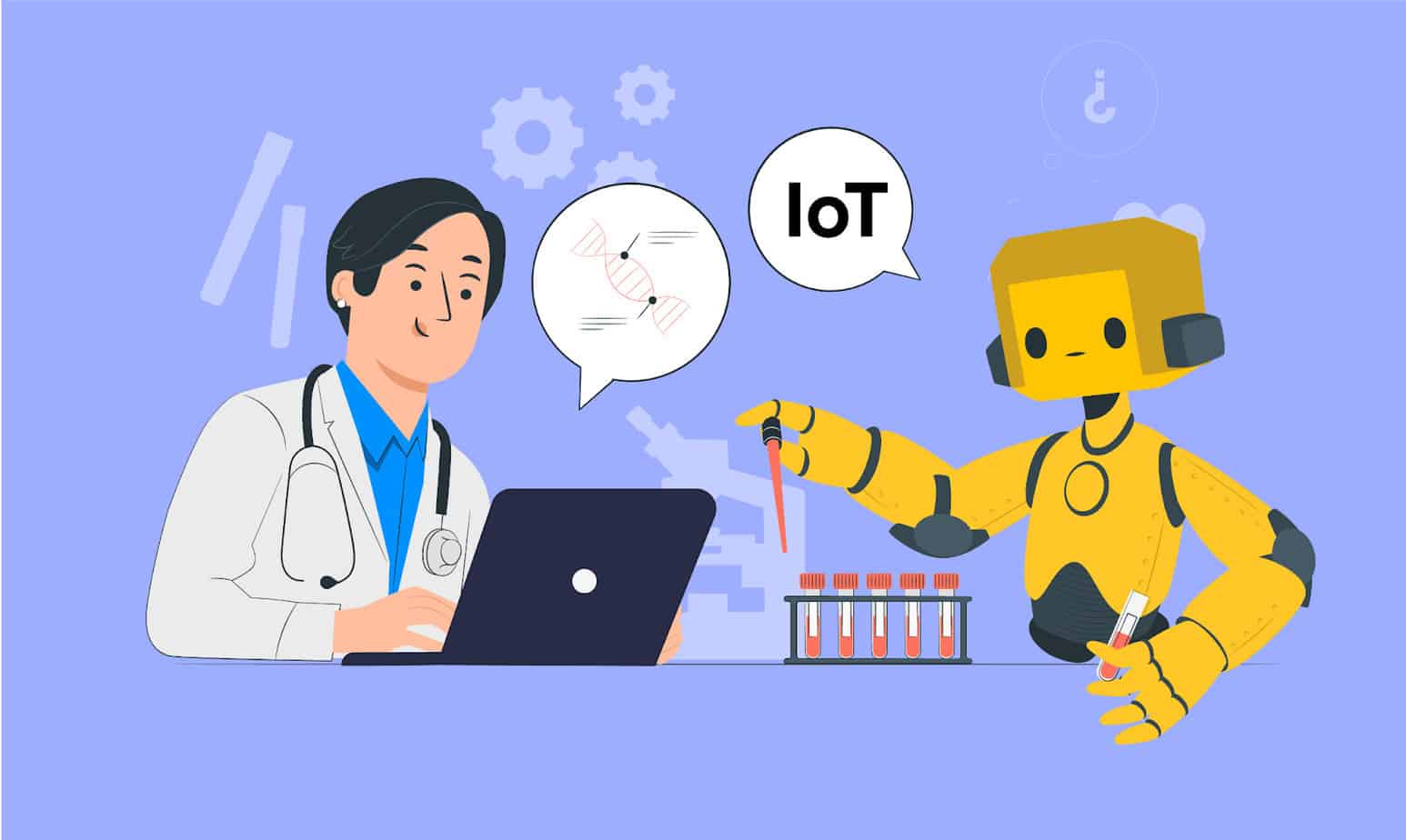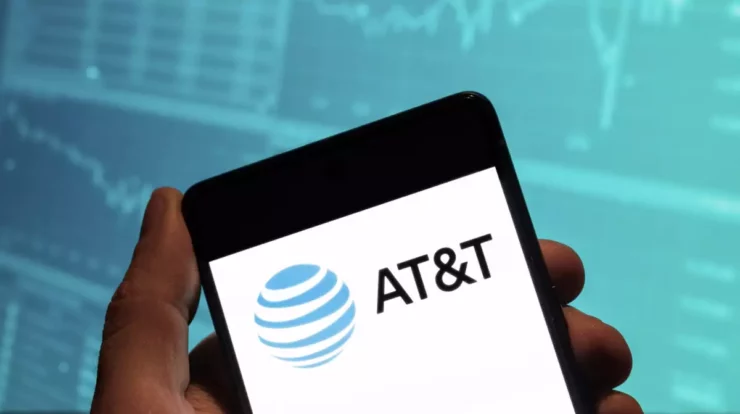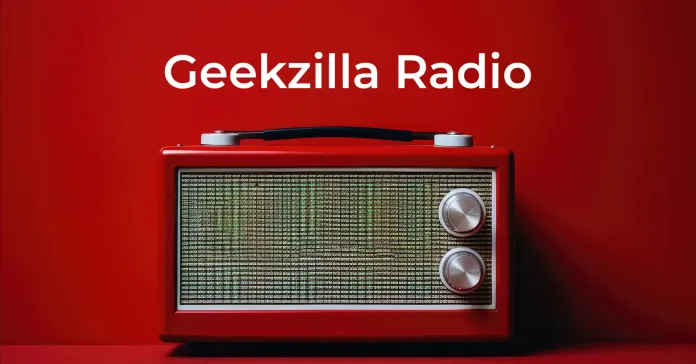
With the increasing popularity of AI and IoT in different industries, AI and IoT are carefully looked upon when it comes to healthcare, as the expectations are quite high.
Hearing about AI and IoT in healthcare, what’s the first thing that comes into your mind?
Automated procedure, wearables, virtual consultations, remote monitoring, and so on.
Well! All these procedures are followed, especially now that the pandemic hit us, the AI and IoT use cases have increased.
Since, everyone of us is concerned with the overall functioning of the healthcare industry, as directly or indirectly, we do get affected by it.
However, there is a limit to which humans can perform both mentally and physically, and after a certain point of time, a point comes when their functionality becomes less productive. Thus, going beyond the maximum level requires the indulgence of technology such as artificial intelligence and IoT.
- According to Intel, by the end of 2025, the IoT industry will be valued at $6.2 trillion.
- According to Statista, the projected size of IoT in the healthcare market worldwide is said to increase to over US $135 billion by 2025.
- As per the market forecast by Statista, the global market size for AI in healthcare is predicted to increase from roughly one billion to more than 28 billion U.S. dollars.
AI and IoT Making an Impact in Health Care Industry
Improving Diagnosis Accuracy
One of the biggest problems of the healthcare industry in the past was the ‘Diagnosis.’ Basically, diagnosis is considered to be the basis for any problem, if this is done rightly at the correct time, then 50% of the diseases will get cured, and the death ratio will drastically reduce.
Unfortunately, some common diseases, such as lung or breast cancer, are difficult to diagnose. Doctors have a huge role to play, as they have to identify the tumors using the (CT – Computed Tomography) scanner. Although this is one of the most effective diagnosis methods, false negatives and positives are still common.
However, due to the advancement in digital transformation in healthcare, there has been a rise in AI and IoT. AI is known to improve the scan quality – including stitching the images together, cleaning up visuals for an easier and complete scan. In addition, AI algorithms have been considered to be more effective than radiologists to identify the cancer signs in a CT scan.
Remote Monitoring of Patient
Many remote patient monitoring systems use the internet connectivity’s IoT sensors that give the nurses and the doctors regular patient updates. With the help of these remote sensors, it gets easy to track the patient’s health right from any hospital room. The doctors or the nurse no longer have to personally visit the patient to check them, as these sensors alert the doctors about the health events of the patient.
The healthcare systems in IoT drastically help in reducing the labor time, which is otherwise needed to track the patient’s health. Traditionally nurses were responsible for manually recording the patients’ vitals every few hours. With the modern usage of IoT sensors, automated monitoring systems automatically record the vitals, which frees away the labour time of the labour. The staff can take up more critical work.
Reducing Wait Time – Better Management
In their everyday work, the hospitals using AI and IoT have noticed a significant improvement in overall hospital management. IoT technology drastically helps in reducing the wait time inside the hospitals. The automated bed tracking systems notify the hospital staff when the bed is occupied and free. This, thereby, allows the administrative staff to admit the patients who require emergency assistance at the earliest.
Admission time of the patients gets slashed to almost 50% less when hospitals use the IoT technology in terms of automated bed tracking systems. No longer do nurses or other hospital staff visit the rooms one by one to check for availability. Through this process, hospitals can drastically help treat emergency patients quickly and save lives.
Identification of Critical Patients
When the hospitals are fully packed and reach their utmost capacity, during that time, it gets challenging to identify the patients who require immediate assistance and provide them care accordingly. This process is surely not easy. Therefore, nurses and doctors need to analyze a huge amount of information about patients and make immediate decisions, even under pressure.
Luckily, AI and IoT systems provide a huge helping hand in such stressful situations. Hospitals have been making use of virtual assistants, which are AI-powered. These assistants help in saving the patients who are sick. These systems are designed in such a way that they help in alerting the doctors when the condition of the patient drastically starts to deteriorate, and at the same time provide a detailed analysis of their conditions regularly. In many cases, the hospitals using AI systems could also catch the problems originally missed by the doctors.
Tracking Medical Equipment
Losing medical equipment highly adds to the operational cost of the hospitals. This is because hospitals buy these machines by spending a huge sum of money, and these machines are very critical for the hospital, for the treatment of the patients. Therefore, replacing these machines costs a huge bomb to the hospital. However, with the digital transformation in healthcare, healthcare organizations have become easy to reduce the risk of misplacing their equipment and machines, which directly lowers the operational cost. Moreover, it ensures the equipment is available 24*7 for the patients.
The new devices have in-built GPS systems and RFID, which helps the hospital staff track the hospital’s equipment or if the patient’s home carries a machine. This tracking system has an automated button that requests approval from the insurance team when the pump is pulled off for patients’ use from the shelf. This process ensures that the patient has a pre-approved disclaimer to take the device home with themselves.
Parting Thoughts
The newer versions of AI and IoT, have been helping the hospitals to reap the full advantage of the data such as that of CT scan and the vital records of the patients. These technological systems have been allowing the doctors to monitor the patient in the best way possible remotely, even when they are not around the vicinity. The major UPS of these technologies is the accuracy in diagnosis for certain critical diseases.


